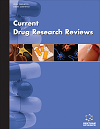
Full text loading...
We use cookies to track usage and preferences.I Understand
Harungana madagascariensis (HM) and Psorospermum aurantiacum (PA), used traditionally for skin care, have been reported to upregulate the expression of intracellular antioxidant genes, thereby preventing melanoma and protecting fibroblast cell lines from Ultraviolet B (UVB)-induced intracellular oxidative stress.
This investigation aimed to identify major compounds in bioactive fractions using bioassay-guided fractionation.
The anti-inflammatory effect of fractions was determined by measuring their inhibitory activity on 15-lipoxygenase and nitric oxide (NO) in lipopolysaccharide-stimulated RAW 264.7 macrophage cells. Additionally, the anti-aging efficacy of the fractions was determined by assessing the expression of markers for the aging process, i.e., expression of tyrosinase (TYR), tyrosinase-related protein-1 (TRP-1), procollagen type-1 (COL1A1), and matrix metalloproteinase-1 (MMP-1) in UVB-induced photoaging in skin cell-lines. Furthermore, UHPLC-MS-based identification of the bioactive compounds from the most prominent fraction was also carried out.
Hexane fraction of HM significantly inhibited (p < 0.05) the 15-lipoxygenase (IC50 = 46.80 µg/mL) and NO production (IC50 = 66.55 µg/mL), whereas hexane fraction of PA was effective (p < 0.05) in inhibiting 15-lipoxygenase activity (IC50 = 27.55 µg/mL). Furthermore, the hexane fraction of HM and methanol fraction of PA were significantly effective (p < 0.05) in reverting the UVB-mediated altered expressions of MMP-1, TYR, TRP-1, and COL1A1. Furthermore, hexane fraction of HM revealed the presence of harunganin and betulinic acid, whereas vismion D, vismin, kenganthranol B, and bianthrone 1a were identified from the methanol fraction of PA.
Overall, the hexane fraction of HM and methanol fraction of PA displayed effective anti-aging activities, with additional anti-inflammatory effects.

Article metrics loading...

Full text loading...
References


Data & Media loading...
Supplements

